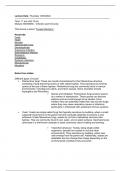Lecture Date: Thursday 14/03/2024
—------------------------------------------------------------------------------------------------------------------
Time: 11 am until 12 pm
Module: BIOS5050 – Infection and Immunity
This lecture is about “Fungal infections.”
Keywords:
Fungi
Yeast
Mycosis
Opportunistic fungi
Dermatophytes
Cutaneous Infection
Subcutaneous infection
Ringworm
Candidiasis
Systemic infections
Mycotoxicosis
Mycetism
Notes from slides:
Different types of mould
Filamentous fungi: These are moulds characterised by their filamentous structure,
consisting of long branching chains of cells called hyphae. They reproduce by forming
spores at the tips of these hyphae. Filamentous fungi are commonly found in various
environments, including soil, plants, and indoor spaces. Some examples include
Aspergillus and Penicillium.
Spores and inhalation: Filamentous fungi produce spores
as a means of reproduction. These spores can become
airborne and are small enough to be inhaled. Once
inhaled, they can potentially make their way into the lungs,
where they may cause respiratory issues or infections,
particularly in individuals with weakened immune systems.
Yeast: Yeasts are single-celled fungi that typically reproduce by budding, where a small
outgrowth (bud) forms on the parent cell and eventually detaches to become a new
individual. Unlike filamentous fungi, yeasts do not form multicellular structures like
hyphae. They are commonly found in soil, water, and on plant surfaces. Saccharomyces
cerevisiae is a well-known example of yeast commonly used in baking and brewing.
Yeast-like behaviour: Yeasts, being single-celled
organisms, typically live outside in soil and other
environments. They reproduce by budding, where new
cells emerge from the parent cell. Additionally, yeasts are
adaptable and can change their shape depending on the
environmental conditions they encounter.
, There are approximately 7000 types of moulds, although this number may be higher.
Among these types, around 300 are known to be human pathogens, meaning they can
cause diseases in humans.
Classification based on growth: Fungi can be classified based on their characteristics.
Filamentous fungi grow as multicellular structures with branching hyphae, while yeasts
are unicellular organisms. This classification can help understand their biology and
potential impact on human health.
Overall, this explanation provides insight into the diversity and characteristics of moulds,
particularly filamentous fungi and yeast, highlighting their biological features, classification, and
potential health implications.
Mycosis
Mycosis refers to fungal infections that can affect various animals, including humans. Fungal
pathogens can infect different tissues and organs in the body, leading to a range of symptoms
and health issues.
Obligate parasite: This term describes fungi that rely on living hosts to obtain nutrients
and resources for their growth and reproduction. Similar to other parasites, obligate
parasitic fungi invade host tissues to derive sustenance. Dermatophytes are a group of
obligate parasites commonly residing on the skin, hair, and nails of animals, including
humans. These fungi can cause infections such as ringworm, athlete's foot, and nail
infections.
Soil fungi and temperature tolerance: Some fungi that cause mycosis have a soil
reservoir, meaning they reside naturally in soil environments. These fungi can tolerate a
wide range of temperatures, making them resilient and difficult to eradicate. They can
infect animals through contact with contaminated soil or organic matter. Their ability to
survive in diverse environments poses challenges for controlling and preventing fungal
infections.
Opportunistic fungi: Opportunistic fungi are pathogens that typically do not cause
disease in healthy individuals but can become pathogenic when the host's immune
system is compromised. For example, individuals with weakened immune systems due
to conditions such as HIV/AIDS, cancer, or organ transplantation are more susceptible to
opportunistic fungal infections. These fungi can exploit weakened immune defences to
cause severe infections in various tissues and organs.
In summary, mycosis encompasses fungal infections in animals, including humans. These
infections can be caused by obligate parasites such as dermatophytes, soil fungi with
temperature tolerance, and opportunistic fungi that thrive when the host's immune system is
compromised. Understanding the characteristics and behaviours of these fungal pathogens is
crucial for the effective diagnosis, treatment, and prevention of mycosis.
Dermatophytes (further)
Dermatophytes can infect all individuals, not just those who are immunocompromised. They are
capable of causing infections in people with healthy immune systems as well as those who are




